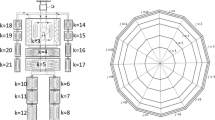Abstract
A technique has been developed that enables most humans to establish rapid self-regulatory control of their own skin temperature when provided with immediate visual feedback information concerning variations in local skin temperature. Training took place during 15-min periods within 45-min sessions. Clear evidence of learning was usually manifested within 4 sessions. After acquisition occurred, mean change per session was approximately 2.2° F, ranging up to 6.5° F. Training was continued with some subjects who were taught to alter temperature in opposite directions during successive periods on the same day. After practice, these subjects routinely displayed ranges of 9–14° F within 15 min.
Similar content being viewed by others
References
Baer, P. E., & Fuhrer, M. J. Cognitive processes in the differential trace conditioning of electrodermal and vasomotor activity.Journal of Experimental Psychology 1970,84 176–178.
DiCara, L. V., & Miller, N. E. Instrumental learning of vasomotor responses by rats: Learning to respond differentially in the two ears.Science 1968a,159 1485–1486.
DiCara, L. V., & Miller, N. E. Instrumental learning of peripheral vasomotor responses by the curarized rat.Communications in Behavioral Biology 1968b,1 209–212.
Emurian, C. S., & Taub, E. Self-regulation of skin temperature using a variable intensity light. Paper presented at Eastern Psychological Association Meeting, New York, April 1972.
Green, E. E., Green, A. M., & Walters, E. D. Voluntary control of internal states: Psychological and physiological.Journal of Transpersonal Psychology 1970,11 1–26.
Hardy, J. D., & DuBois, E. F. Basal metabolism, radiation, convection and evaporization at temperatures of 22° to 35°C.Journal of Nutrition 1938,15 477.
Jacobson, E.Progressive relaxation. Chicago: University of Chicago Press, 1929.
Lisina, M. I. The role of orientation in the transformation of involuntary reactions into voluntary ones. In L. G. Voronin, A. N. Leontiev, A. R. Luria, E. N. Sokolov, & O. S. Vinogradova (Eds.),Orienting reflex and exploratory behavior. Washington, D.C.: American Institute of Biological Sciences, 1965.
Mendelson, E. S. Measurement of the superficial temperature gradient in man.American Journal of Physiology 1926,114 642–647.
Miller, N. E., & DiCara, L. V. Instrumental learning of urine formation by rats; changes in renal blood flow.American Journal of Physiology 1968,215 677–683.
Newburgh, L. H. (Ed.).Physiology of heat regulation and the science of clothing. New York: Hafner Publishing Company, 1949.
Razran, G. The observable unconscious and the inferrable conscious in current Soviet psychophysiology: Interoceptive conditioning, semantic conditioning and the orienting reflex.Psychological Review 1961,68 81–147.
Sargent, J. D., Green, E. E., & Walters, E. D. The use of autogenic feedback training in a pilot study of migraine headaches.Headache 1972,12 120–124.
Shmavonian, B. M. Methodological study of vasomotor conditioning in human subjects.Journal of Comparative and Physiological Psychology 1959,52 315–321.
Snyder, C., & Noble, M. E. Operant conditioning of vasoconstriction.Journal of Experimental Psychology 1968,77 263–268.
Taub, E., & Emurian, C. S. Operant control of skin temperature. Paper presented at the meeting of the Biofeedback Research Society, St. Louis, 1971.
Taub, E., & Emurian, C. S. Self-regulation of skin temperature using a variable intensity light. In J. Stoyva, T. Barber, L. V. DiCara, J. Kamiya, N. E. Miller, & B. Shapiro (Eds.),Biofeedback and self-control: 1972. Chicago: Aldine-Atherton, 1973, p. 504 (abstract).
Taub, E., Emurian, C. S., & Howell, P. Further progress in training self-regulation of skin temperature. Paper presented at the meeting of the Biofeedback Research Society, Colorado Springs, 1974.
Teichner, W. H., & Levine, I. M. Digital vasomotor conditioning and body heat regulation.Psychophysiology 1968,5 67–76.
Woods, P. J., Griffith, B. A., Page, R. P., & Rodier, P. M. Human responses to various conditions of water temperature.Perception and Psychophysics 1967,2 157–160.
Woodworth, R. S., & Schlosberg, H.Experimental psychology (Rev. ed.) New York: Henry Holt, 1955, Chapter 10.
Author information
Authors and Affiliations
Rights and permissions
About this article
Cite this article
Taub, E., Emurian, C.S. Feedback-aided self-regulation of skin temperature with a single feedback locus. Biofeedback and Self-Regulation 1, 147–168 (1976). https://doi.org/10.1007/BF00998583
Received:
Issue Date:
DOI: https://doi.org/10.1007/BF00998583




